How to Understand the Llama 3 License: Key Details You Need to Know
Learn the details of the Llama 3 License, including usage, restrictions, and how to integrate it into your projects with Novita AI's LLM API.
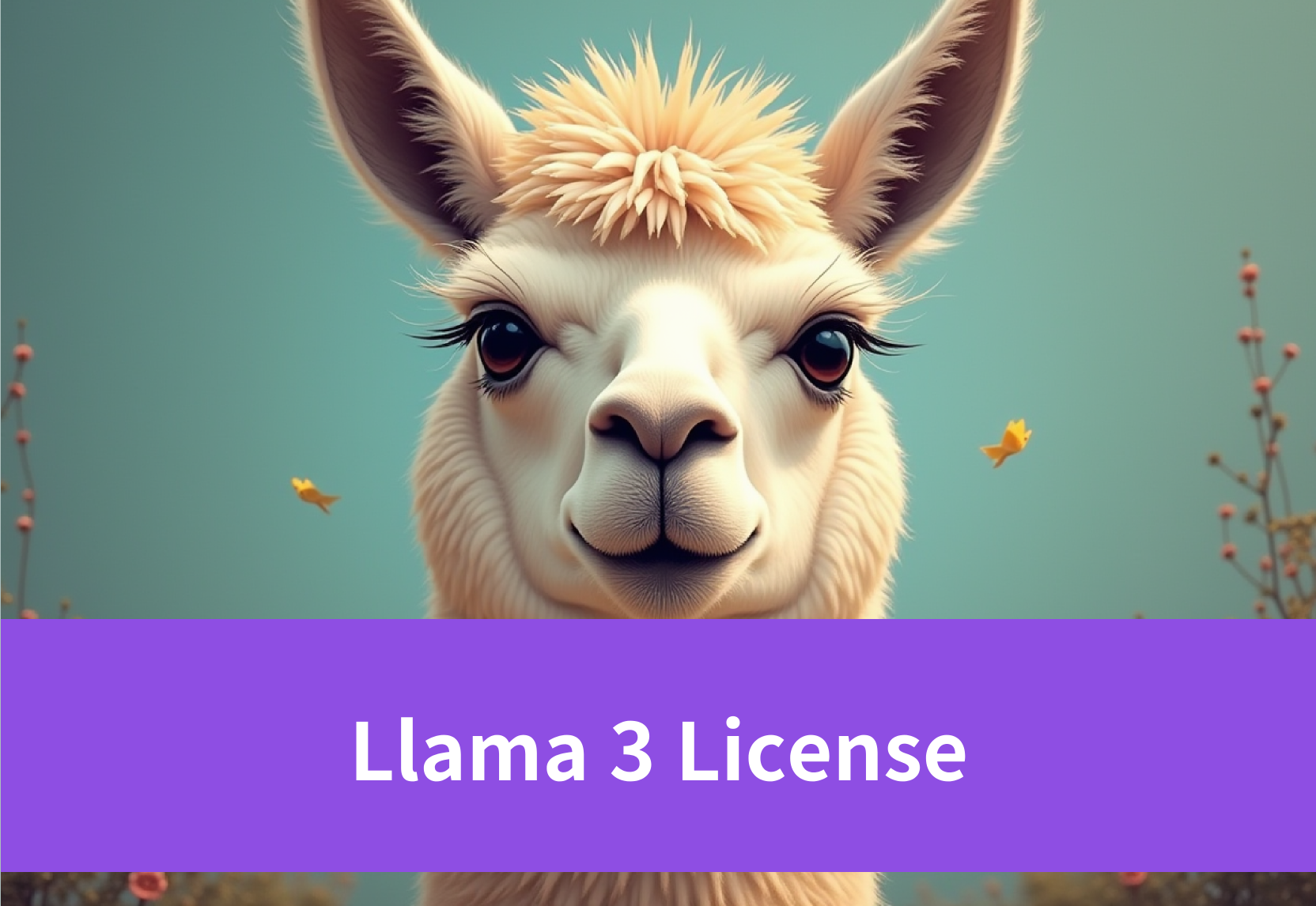
Key Highlights
- Llama 3 License Overview: The Llama 3 license defines how Meta’s AI models can be used, shared, and modified, ensuring legal and ethical use while protecting Meta’s intellectual property.
- Meta Llama 3 Community License: Users can modify and redistribute Llama 3 models under specific terms, including attribution and compliance with the license.
- Acceptable Use Policy: Meta enforces ethical guidelines, preventing harmful or illegal uses, while ensuring that users take responsibility for informing end-users about AI system risks.
- Commercial Use: Businesses can integrate Llama 3 into their products with proper licensing through services like the Novita AI LLM API, supporting both small and large-scale deployments.
- Restrictions: The license includes limits on scale, non-competition, trademark use, and ethical practices to protect Meta’s intellectual property and foster responsible innovation.
- Novita AI call: The Novita AI LLM API offers an easy way to call Llama 3 into your projects, providing a user-friendly interface for testing and deploying models like Llama 3 in real-world applications.
Introduction
Meta’s Llama 3 is a pretty exciting AI model that’s making an impact in both research and business. Whether you’re a developer, running a business, or diving into research, Llama 3 has a lot to offer.
In this article, we’ll break down what the Llama 3 license covers and how you can use it responsibly. We’ll also walk you through how to bring Llama 3 into your projects with the Novita AI LLM API, so you can start using this powerful tool without the hassle.
What does the Llama 3 license refer to?
The Llama 3 license is the legal set of rules that governs how Meta’s Llama 3 models can be used, shared, and modified. It explains the terms under which individuals, developers, and businesses can access and use the model for things like research, commercial projects, and software development.
This license is important because it makes sure everyone knows how they can use Llama 3 while protecting Meta’s intellectual property. It also clarifies what users can and can’t do when working with Llama 3 technology.
Meta Llama 3 Community License Agreement
The Meta Llama 3 Community License Agreement is the official legal document that lets developers, businesses, and researchers use, modify, and share Llama 3 models. It gives users a non-exclusive, worldwide, non-transferable, royalty-free license to use, copy, distribute, modify, and create derivative works from Llama 3 materials, as long as they follow the terms set in the agreement.
Here are some of the key points of the Meta Llama 3 Community:
- Usage, Modification, and Distribution:
Users are granted the right to use, modify, and distribute Llama 3 materials, including creating derivative works. However, this does not mean that all versions of Llama 3 are open-source or free. The license applies to specific models or versions and requires users to comply with the outlined terms when redistributing or sharing the model or any derivative works.
- Attribution Requirements:
Users must provide proper attribution to Meta when using or distributing Llama 3 models. This includes retaining the copyright notice and including a clear attribution statement such as “Built with Meta Llama 3” on all relevant webpages, user interfaces, product documentation, or anywhere the model is used. When redistributing Llama 3 materials or any derivative works, users must include a copy of the license agreement.
- Modification and Redistribution:
Users are allowed to modify Llama 3 models to suit their specific needs, but any modified or derivative works that are redistributed must comply with the same terms as the original model. Specifically, they must provide a copy of the license and prominently display the attribution statement (“Built with Meta Llama 3”) wherever the materials are distributed, including in product documentation, websites, or user interfaces.
The Meta Llama 3 Community License Agreement provides a clear framework for using and sharing Llama 3 models. It promotes innovation and collaboration in the AI community while making sure Meta’s intellectual property is protected and that the models are used in a responsible and legal way.
Meta llama 3 acceptable use policy
By using Llama 3, you agree not to use it — or allow others to use it — for anything illegal or anything that violates people’s rights. You also can’t use it for anything that could potentially harm, injure, or even endanger someone’s life. Additionally, you shouldn’t use it to intentionally deceive or mislead anyone, and you’re responsible for making sure your users are fully aware of any risks that might come with using the AI system.
Click here to read the full and detailed Meta Llama 3 Community License Agreement and Meta Llama 3 Acceptable Use Policy.
Why is the Llama 3 license crucial for development?
The Llama 3 license plays a vital role in shaping how developers, businesses, and researchers interact with Meta’s powerful AI models. Here’s why it’s so important for development:
- Clear Guidelines for Usage
The license lays out clear rules about what you can and can’t do with the Llama 3 models. Whether you’re using it for research, building apps, or commercial projects, it clears up any confusion and makes sure everyone knows their rights and responsibilities.
- Encourages Responsible Innovation
By setting restrictions and ethical guidelines, the license ensures that Llama 3 is used responsibly. For example, it prevents harmful or unethical applications while encouraging creative and practical uses in areas like education, healthcare, and business automation.
- Supports Open Collaboration
The license fosters collaboration by allowing developers to modify and redistribute the models within set parameters. This opens the door for a community-driven approach, where improvements and innovations can be shared while maintaining consistency and credit to Meta.
- Facilitates Commercial Use
With clear terms for commercial applications, businesses can confidently integrate Llama 3 into their products or services. This lowers legal risks and provides a solid foundation for scaling AI-driven solutions.
- Protects Intellectual Property
The license balances openness with intellectual property protection. While users can access and customize the models, Meta retains rights to ensure fair use and prevent misuse or unauthorized claims.
The Llama 3 license is more than just a legal agreement — it’s a cornerstone for sustainable and innovative AI development. By providing structure, fostering collaboration, and ensuring ethical use, it empowers developers to leverage Llama 3 models confidently while safeguarding Meta’s vision for responsible AI advancement.
llama 3 restrictions
The Llama 3 license comes with several important restrictions to ensure the technology is used responsibly and ethically. Here are the key limitations you should be aware of:
Scale of Use: If your service reaches over 700 million monthly users, you’ll need to get additional licensing from Meta. This clause ensures that large-scale operations either give back to Meta or negotiate a more tailored agreement.
Non-competition: The license specifically prevents you from using Llama 3 models to improve or power competing AI systems. These restrictions are mainly in place to protect Meta’s tech from being used directly by competitors.
Trademark Use: You can’t use Meta’s trademarks without clear permission. This is to protect Meta’s brand image and make sure the trademarks are used correctly.
Ethical Usage: You’re not allowed to use Llama 3 for harmful purposes, like creating misleading or malicious content, supporting illegal activities, or developing unsafe AI systems. These rules help make sure Llama 3 is used ethically, reflecting Meta’s commitment to responsible AI.
Overall, these restrictions are crucial for keeping Llama 3 use within legal and ethical boundaries, protecting Meta’s intellectual property, and supporting responsible innovation.
Understanding the Llama 3 License Commercial Use
The Llama 3 license outlines the conditions for commercial use, requiring businesses to obtain additional permissions or licensing. While free for non-commercial use, businesses must ensure Meta is compensated for commercial applications and its intellectual property is protected.
Llama 3 has shown impressive performance in industry benchmarks, such as achieving 89.7% accuracy in the TriviaQA-Wiki test. It excels in areas like consulting, coding, and creative writing, making it a valuable tool for businesses needing advanced AI solutions.
To use Llama 3 commercially, businesses must follow the terms in the Llama 3 Community License Agreement and the Llama 3 Acceptable Use Policy, ensuring responsible use and respect for Meta’s intellectual property.
llama 3 license cost
The Llama 3 license cost depends on your usage and scale. Non-commercial or small-scale use may be free, but businesses or organizations using it commercially will likely need a separate license, with fees based on deployment size or user numbers.
Meta’s licensing ensures businesses support the ongoing development of Llama 3. Be sure to check the Meta Llama 3 Community License Agreement for full details, including any additional costs related to infrastructure or maintenance.
Now that we’ve covered the Llama 3 license and its impact on commercial use and costs, let’s talk about how to actually use this powerful AI in your projects. If you’ve obtained the proper Llama 3 license, you can call Llama 3 into your products with the Novita AI LLM API. In the next section, we’ll show you how to set up and use the API.
How to Use the Novita AI LLM API to Call Llama 3
A Step-by-Step Guide
Step 1: Sign up or log in to Novita AI
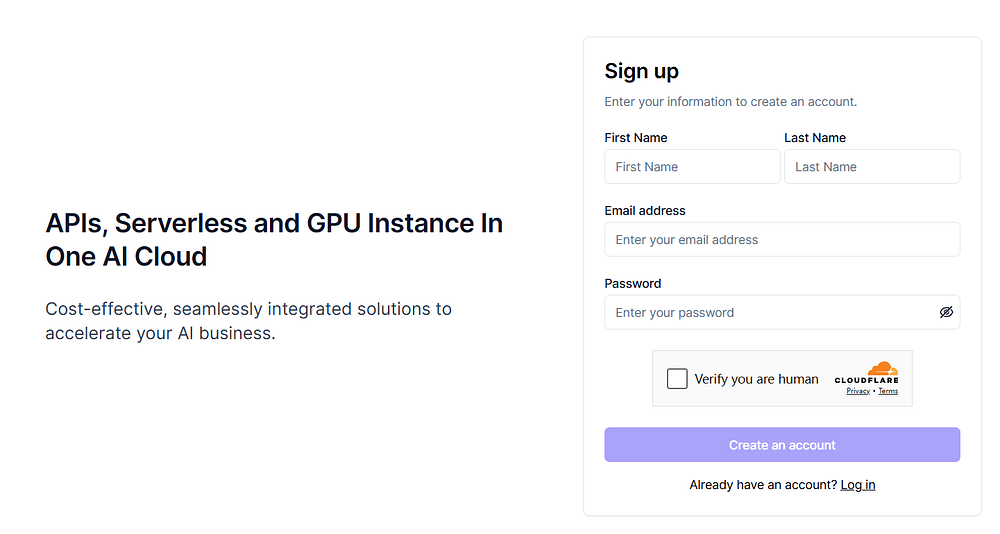

Step 2: Go to the Manage Keys page and click ‘Copy’ to easily get your key. If necessary, you can also generate a new key.

Step 3: Go through the LLM API documentation to find the API Base URL, and make sure to read the other details carefully.
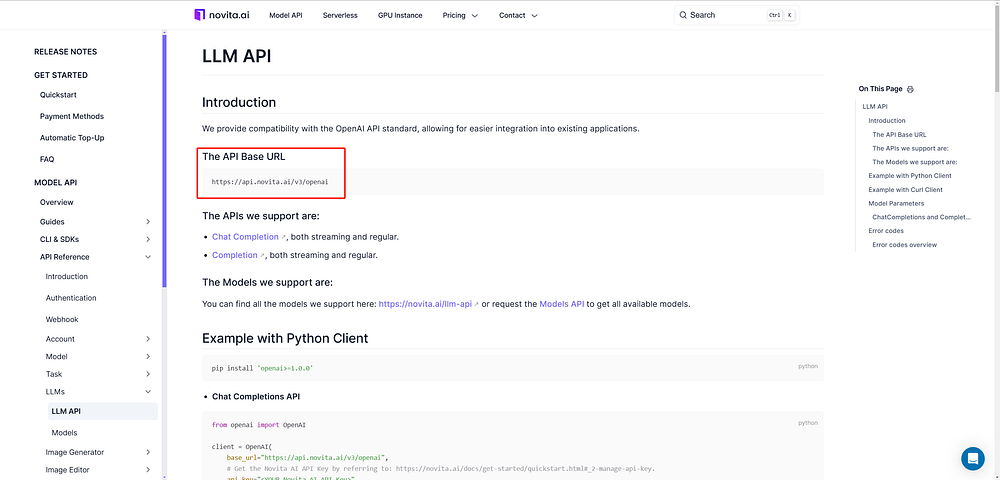
Step 4: Choose the model you want to use. We offer both Llama 3 and Llama 3.1 APIs.
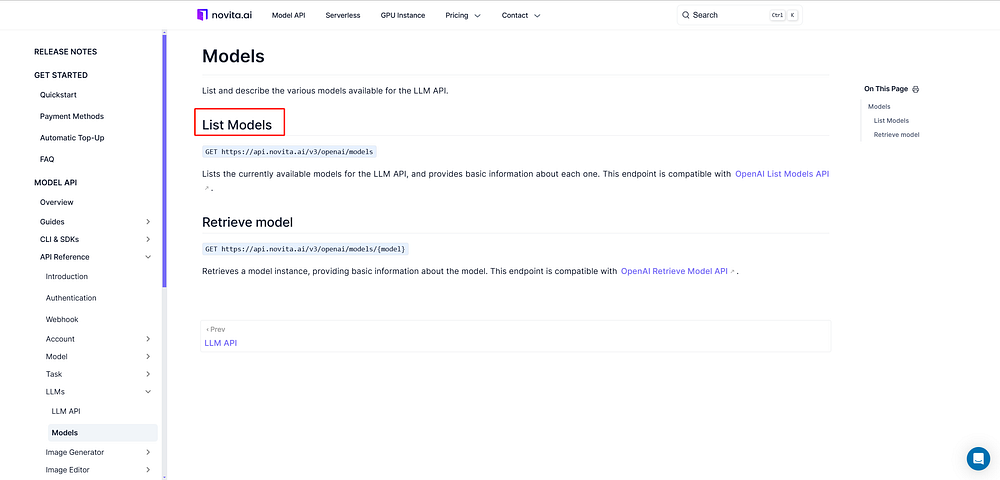
If you’re interested in models beyond the Llama series, you can check out the Novita AI LLM Models List for the full list of available models on Novita AI.
Step 5: Set the appropriate model parameters and install the required libraries.
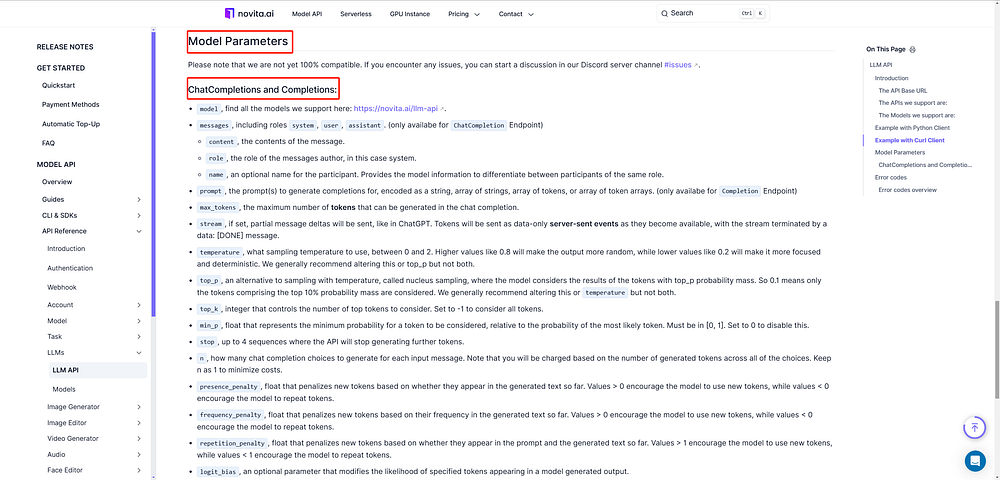
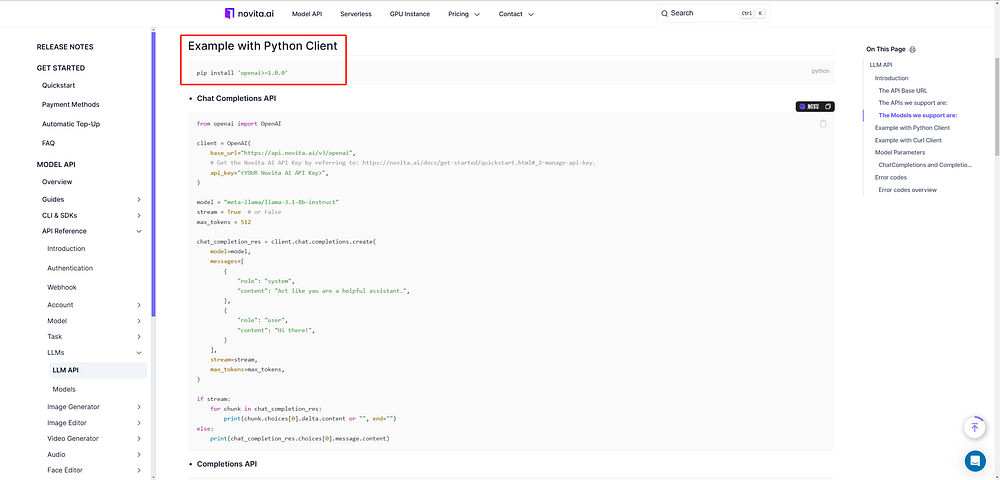
Step 6: Conduct several tests to verify the API’s reliability.
Exploring Llama 3 with the Novita AI LLM Demo
Before making the call, you can test it on the Novita AI LLM Demo, where we offer free usage credits.
Step 1: On the homepage, click on Products, select “Model API” and “LLM API”.
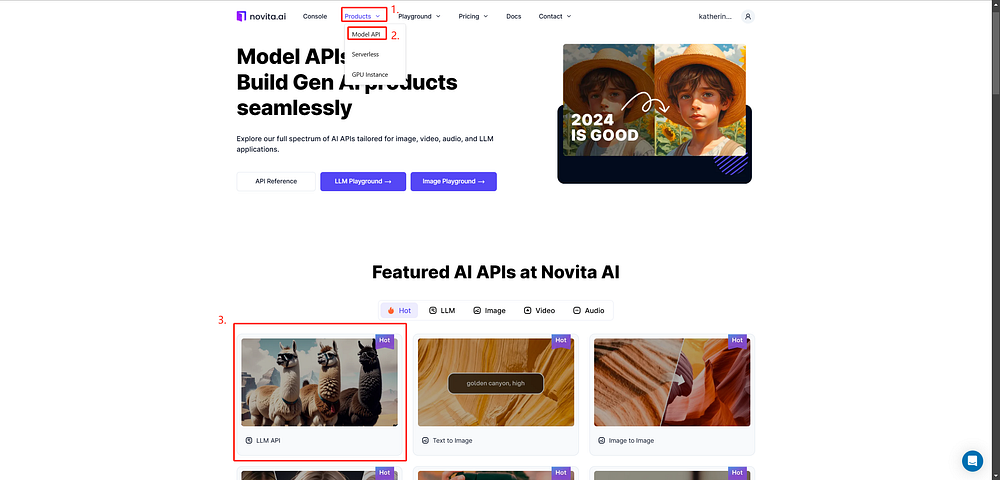
Step 2: On the LLM API page, choose the model you want to try.
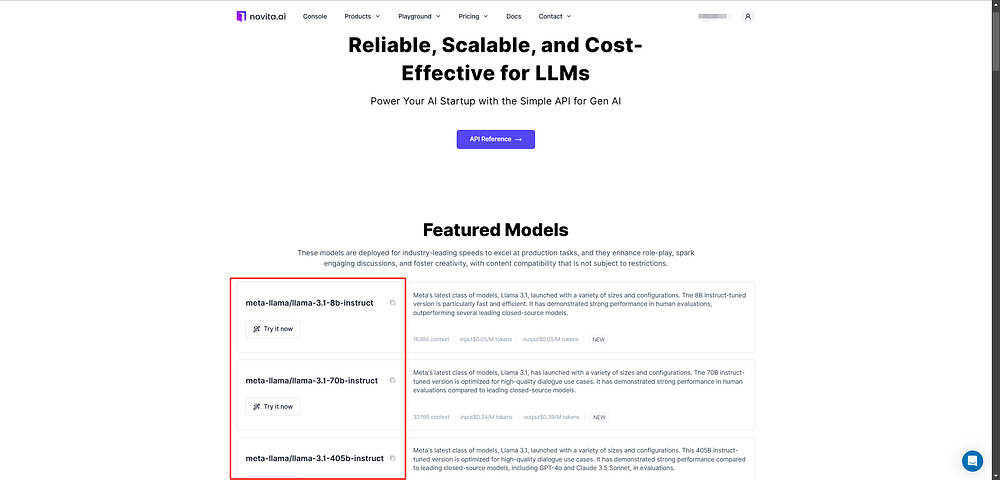
We offer models like meta-llama/llama-3–8b-instruct, meta-llama/llama-3–70b-instruct, and more.
Step 3: Enter your prompt in the designated field and send it. You’ll receive the results shortly.
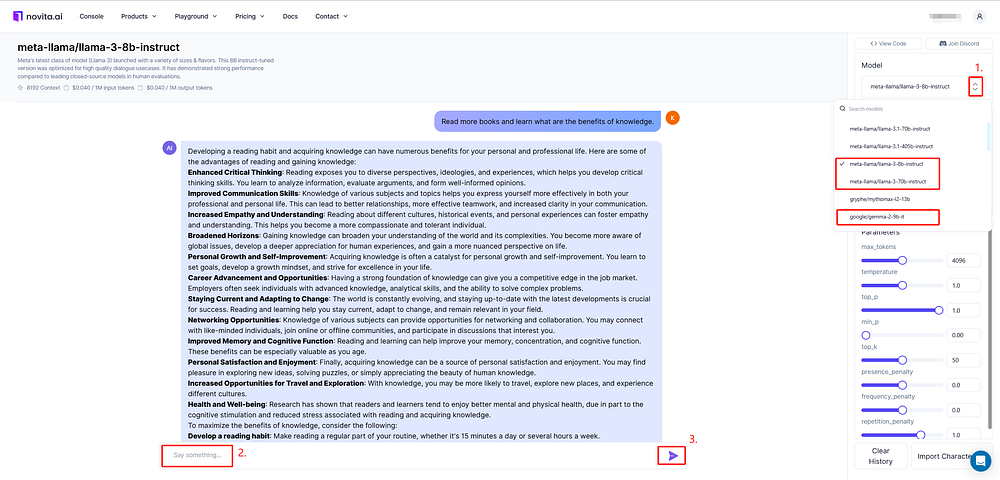
Conclusion
The Llama 3 license is not just a legal formality — it’s a framework that ensures responsible use while enabling exciting innovations. With the right licensing, you can leverage Llama 3 to build amazing products and services, whether for research or commercial use. And with Novita AI’s LLM API, calling Llama 3 into your projects is straightforward and hassle-free. So, if you’re ready to dive into the world of Llama 3, this is your starting point for a smooth and responsible AI journey!
Frequently Asked Questions
What are the requirements for Meta Llama 3?
Meta Llama 3 requires 20–30GB of disk space, and it supports Linux or Windows. You’ll need Python 3.7 or higher, and it’s recommended to use either PyTorch or TensorFlow.
Will Llama 3 be open source?
Mark Zuckerberg’s letter highlights the benefits of open-source for developers and Meta, introducing Llama 3.1 405B, the first frontier-level open-source AI model with 128K context and multi-language support.
Is llama 3 safe?
Open-source software is generally considered more secure because of community review, but its security also depends on how active and well-maintained the community is.
Can I use llama 3.1 for business?
When using Llama 3.1 for commercial purposes, you must prominently display “Built with Meta Llama 3.1” on all relevant pages, interfaces, and documentation.
What data is llama 3 trained on?
Llama 3 was pre-trained on over 1.5 trillion public data tokens, making its dataset seven times larger than that of Llama 2.
Originally published at Novita AI
Novita AI is the All-in-one cloud platform that empowers your AI ambitions. Integrated APIs, serverless, GPU Instance — the cost-effective tools you need. Eliminate infrastructure, start free, and make your AI vision a reality.
Recommended Reading
1.Discover the Power of Llama 3 Uncensored Models